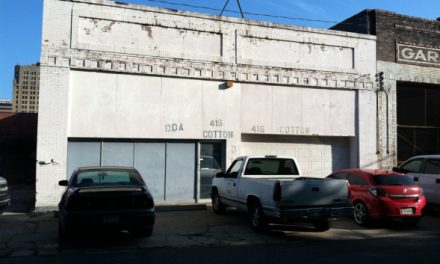What makes a downtown a fun, vibrant and interesting place to live or visit? The list could include museums, art and cultural attractions, interesting businesses, cool places to live, work, eat and drink. I’ll bet that any lists you’ve ever made have never said ‘parking lot’ or ‘vacant lot.’ Vibrancy and a vacant lot are worlds apart. Downtowns and downtown districts thrive on density; on buildings that provide the physical space for jobs, activity, and excitement. Density is what keeps historic and downtown districts intact, and what holds neighborhoods together. Buildings are important, both buildings that are old enough to be deemed historic and those buildings that, if they survive, one day will be.

Buildings are the key to jobs, business and vibrancy.
On Tuesday, June 8, an ordinance speeding up the process for building demolition in downtown Shreveport was introduced. We have lost many buildings to demolition over the years, and it continues to threaten the fabric of our city center. We have few tools to fight demolition, and this proposed ordinance weakens us further.

The three story white building was on the city’s demolition list. Actions by the DDA helped save it.

The former owner of the 17-story Slattery Building once tried to pull a demolition permit.
Let’s say you own a building in downtown Shreveport and want to tear it down. It can be for a legitimate reason, such as the building is seriously damaged in a fire and can’t be rebuilt. On the flip side, it could be that you’ve decided that you simply have no plans for the building and see no reason to save it. Under the current ordinance, you would go to the city’s office of Permits and Inspections and pull a demolition permit. This would trigger a 180-day demolition delay that would give the Downtown Development Authority (DDA) the opportunity to search for a buyer, to talk to you about donating the building to someone who will fix it up or to work with you to rehab the building. Over the years, we have been able to use the delay to prevent the demolition of several properties in the Downtown Development District. If there is a strong reason to demolish the building sooner, either the DDA or the building owner could ask the City Council to waive the demolition delay. That has happened several times.
The buildings in our communities are our history, our architecture, our story. Many of them will survive us, and will be here long after we are not. One downtown property owner had it right when he told me, ‘We are just caretakers of these important properties for future generations.’

One of downtown’s latest rehabs. This is not a ‘historic’ structure. Photo by Trey Danger.
The downtown district has been a bright spot of rehabilitation and redevelopment. We hold art events in buildings that used to be fire stations and furniture stores, go to the movies in a building that used to be a toy store, live and work in an old Salvation Army building, a department store, a former bank, telephone company, and wholesale hardware store, a building that used to rebuild radios is now a favorite retail shop, and we enjoy music, food and fun at an old bus station, but we’re not finished. There is much more left to do.

416 Cotton- Before.

416 Cotton- After.
These buildings are the key, they always have been, and we need to cherish them more, not less.
When you read the proposed new Downtown Demolition Ordinance, you see that the DDA potentially has a month or less to find a buyer for a building or encourage the donation of a building slated for demo. Anything less than 180 days practically insures failure. We work with developers and investors daily and can assure you that no decisions, especially large and potentially costly ones, are made quickly. Ideas have to be formulated, due diligence accomplished, plans drawn, banks and investors lined up, and even then, the owner of the building who wants to demo it in the first place has to be willing to sell it.
The background information to the proposed new ordinance states that this is an effort to allow for ‘more efficient elimination of blighted property and improve the overall appearance of downtown Shreveport.’ There is no definition of ‘blighted’, nor is this Downtown Demolition Ordinance limited to just ‘blighted’ property, whatever that definition is. To ‘improve the overall appearance of downtown Shreveport’? Properties in ill repair are not attractive, but as long as a building survives, it can be rehabbed and made useful again. We have dozens of examples of this. Once buildings are gone, any opportunity to repurpose them is gone, too. The sad fact is that over the past 40 or so years, people have not been demolishing buildings to build something new downtown, it has been for surface parking or simply vacant lots, neither of which improve our appearance, add jobs or opportunities, or strengthen our tax base. The Demolition Delay Ordinance does not need to be weakened further.

830 Louisiana Ave. Before.

830 Louisiana Ave. After.
Our buildings create the density, opportunities, jobs, vibrancy and the ‘feel’ our city wants and needs for our downtown; the density and resiliency organizations like Strongtowns.org and Urban 3 promote. Downtown needs more tools to repurpose buildings, not more and speedier ways to take them to the ground.




